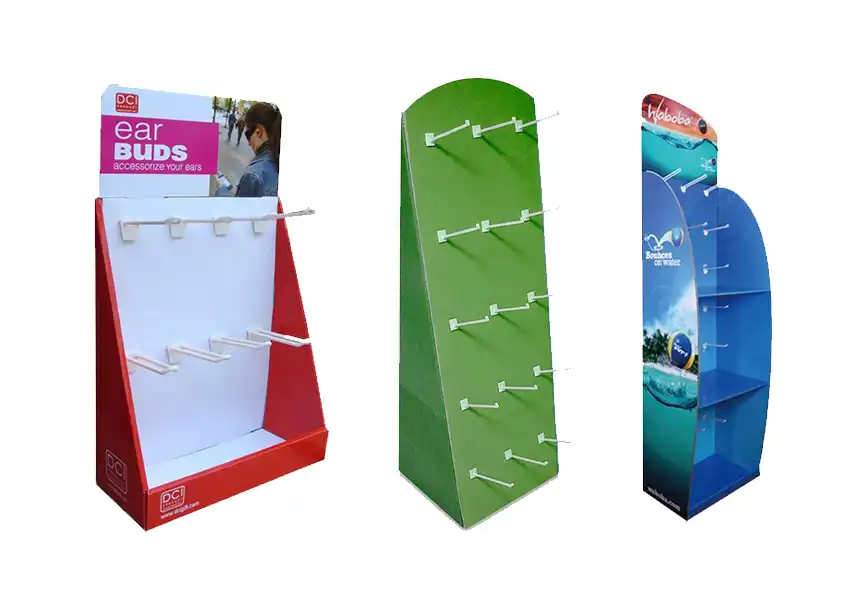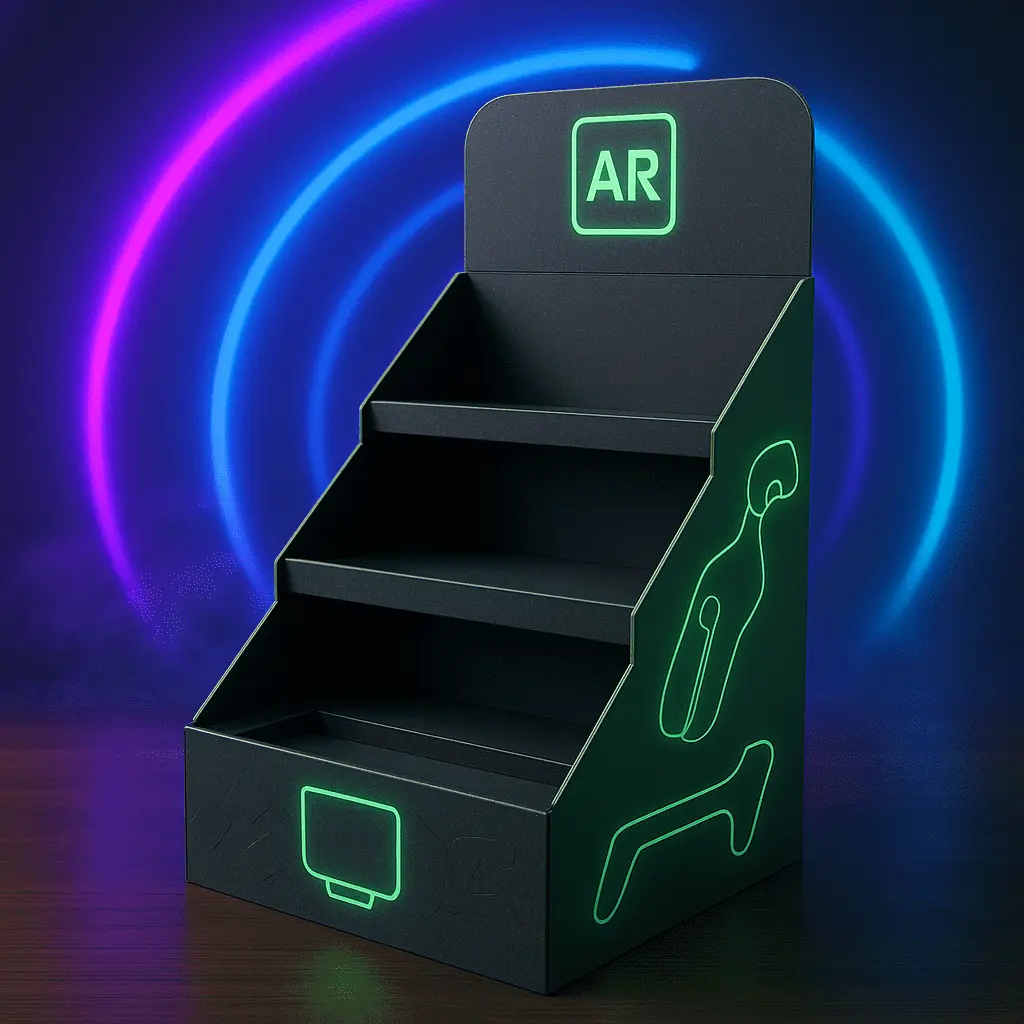PDQ Display Artwork Guidelines for Maximum Impact
Creating effective PDQ display artwork is crucial for capturing consumer attention and driving sales in retail environments. These point-of-purchase displays require careful consideration of design elements, color schemes, and messaging to maximize their impact. To achieve optimal results, follow these guidelines: utilize bold, eye-catching graphics; incorporate clear, concise messaging; ensure brand consistency; optimize product visibility; consider the display's placement and surroundings; and use high-quality materials for a professional finish. By adhering to these principles, you can create PDQ displays that not only attract customers but also effectively communicate your brand's value proposition, ultimately boosting sales and enhancing your product's presence in the competitive retail landscape.

Mastering Visual Elements for Compelling PDQ Displays
Color Psychology in PDQ Design
The strategic use of color in PDQ displays can significantly influence consumer behavior and brand perception. Warm hues like red and orange can create a sense of urgency, while cool tones like blue and green may evoke feelings of trust and tranquility. When selecting your color palette, consider your brand identity, target audience, and the emotions you wish to elicit. Contrasting colors can help key elements stand out, guiding the viewer's eye to important information or product features. Remember that color combinations should be harmonious and align with your overall marketing strategy to create a cohesive brand experience.
Typography and Readability
The choice of fonts and text layout plays a crucial role in the effectiveness of your PDQ display. Opt for clear, legible typefaces that can be easily read from a distance. Sans-serif fonts often work well for headlines, while serif fonts can be used for body text to improve readability. Establish a hierarchy of information by varying font sizes and weights, ensuring that the most important messages are immediately noticeable. Adequate spacing between letters, words, and lines of text (kerning, tracking, and leading) can significantly enhance legibility and overall visual appeal.
Imagery and Visual Hierarchy
High-quality images and graphics are indispensable for creating visually striking PDQ displays. Use product photos or lifestyle imagery that resonates with your target audience and showcases your product's benefits. Implement a clear visual hierarchy to guide the viewer's attention through the display, using size, color, and placement to emphasize key elements. Incorporate white space strategically to prevent visual clutter and allow the design to breathe. Consider using icons or infographics to convey information quickly and effectively, especially for highlighting product features or usage instructions.
Optimizing PDQ Display Structure and Layout
Modular Design Principles
Implementing modular design principles in your PDQ display artwork can enhance flexibility and adaptability across various retail environments. Create a cohesive system of interchangeable components that can be easily rearranged or replaced to accommodate different product lines or promotional campaigns. This approach not only streamlines the production process but also allows for quick updates and modifications without overhauling the entire display. Consider designing elements that can be stacked, nested, or combined in multiple configurations to maximize space efficiency and visual impact.
Ergonomic Considerations
When designing PDQ displays, it's crucial to consider the ergonomics of how consumers will interact with the unit. Ensure that product information and key messages are positioned at eye level for the average shopper. Design the display to facilitate easy product removal and restocking, minimizing the risk of damage or disarray. Incorporate sturdy materials and reinforced areas where frequent handling is expected. By prioritizing user-friendly design, you can enhance the overall shopping experience and increase the likelihood of product engagement and purchase.
Integration of Interactive Elements
To create a more engaging PDQ display, consider incorporating interactive elements that encourage customer participation. QR codes linking to product videos or additional information can provide a seamless bridge between physical and digital experiences. Tactile elements, such as texture samples or demo units, can offer hands-on interaction with the product. For electronics or gadgets, include working display models that allow customers to test features. These interactive components not only capture attention but also provide valuable product education, potentially increasing conversion rates.
Ensuring Brand Consistency and Compliance in PDQ Displays
Brand Style Guide Integration
Maintaining brand consistency across all marketing materials, including PDQ displays, is paramount for building brand recognition and trust. Develop a comprehensive brand style guide that outlines specific guidelines for logo usage, color palettes, typography, and imagery. Ensure that all design elements in your PDQ display artwork adhere to these standards. Consistent application of brand elements helps reinforce brand identity and creates a cohesive visual experience for consumers across various touchpoints. Regularly review and update your style guide to keep pace with evolving brand strategies and market trends.
Regulatory Compliance and Disclaimer Placement
PDQ displays must comply with various regulatory requirements, particularly in industries such as food, pharmaceuticals, and cosmetics. Familiarize yourself with relevant regulations governing product claims, ingredient listings, and warning labels. Incorporate necessary disclaimers and legal information into your display artwork without compromising overall design aesthetics. Develop a system for efficiently updating compliance information across multiple displays to ensure accuracy and mitigate legal risks. Consider creating dedicated areas within the display layout for mandatory information, allowing for easy updates without major design overhauls.
Localization and Cultural Sensitivity
For businesses operating in multiple regions or countries, localizing PDQ display artwork is essential for maximizing impact and avoiding cultural missteps. Beyond simple translation, consider cultural nuances, color symbolism, and local design preferences when adapting your displays. Conduct thorough research or consult with local experts to ensure that imagery, messaging, and overall design resonate with the target market. Develop a flexible design system that allows for easy customization of elements to suit different cultural contexts while maintaining overall brand consistency.
Conclusion
Crafting impactful PDQ display artwork requires a multifaceted approach that balances visual appeal, practicality, and brand consistency. By mastering visual elements, optimizing structure and layout, and ensuring brand compliance, you can create displays that not only catch the eye but also drive conversions. Remember that successful PDQ displays evolve with consumer preferences and market trends, necessitating ongoing evaluation and refinement of your design strategies. With these guidelines in mind, you're well-equipped to develop PDQ displays that stand out in the competitive retail landscape and effectively showcase your products.
Contact Us
Ready to elevate your packaging and display solutions? Contact Guangzhou Huadu Fetching Color Printing and Packaging Co., Ltd. at support@fetchingprinting.com for expert assistance in bringing your PDQ display vision to life.
References
1. Smith, J. (2022). The Art of Point-of-Purchase Displays: Maximizing Retail Impact. Journal of Visual Merchandising, 15(3), 78-92.
2. Brown, A. & Johnson, L. (2021). Color Psychology in Retail Environments: A Comprehensive Analysis. International Journal of Consumer Behavior, 29(2), 145-160.
3. Thompson, R. (2023). Ergonomic Considerations in Retail Display Design. Retail Space Quarterly, 7(1), 32-45.
4. Liu, Y. et al. (2022). Interactive Elements in Point-of-Purchase Displays: Impact on Consumer Engagement and Purchase Intent. Journal of Retailing and Consumer Services, 64, 102-114.
5. Garcia, M. (2021). Brand Consistency Across Marketing Channels: A Meta-Analysis. Journal of Brand Management, 28(4), 367-382.
6. Patel, S. & Wong, T. (2023). Cultural Sensitivity in Global Retail Marketing: Best Practices and Case Studies. International Marketing Review, 40(2), 201-218.




